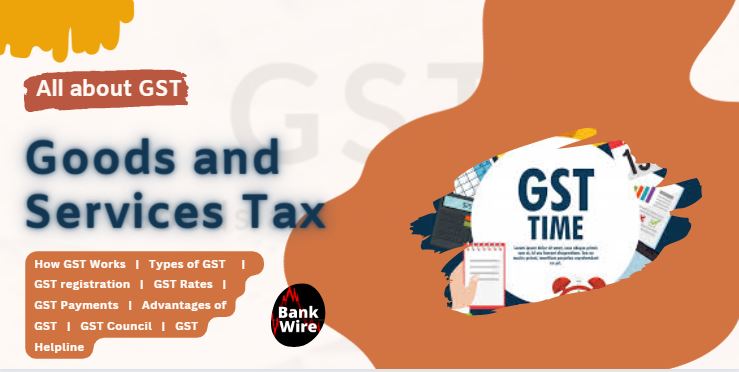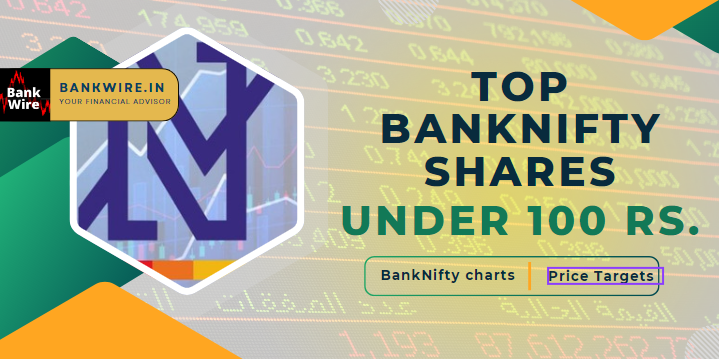
Everything about GST – Goods and Services Tax
GST Types in India, What are the various categories GST Rates?
Goods and Services Tax GST: The most popular thing in India nowadays is GST. The full form of GST is Goods and Services Tax. GST came into existence to solve the issue of people while paying multiple taxes to the government of India. The Finance ministry introduced a multi-stage tax system which is comprehensive in nature and applied on the sale of goods and services. GST is applicable throughout India. In this article we will discuss all about Goods and Services Tax (GST).
Table of content
- What is GST?
- How does the GST Works in India?
- Types of GST in India
- What is GST registration?
- Who Should Register for GST?
- How to Register for GST?
- What are the GST Rates of various categories?
- How to make GST Payments?
- Advantages of GST
- What is the GST Council?
- GST Helpline or GST contact Number
What is the Goods and Services Tax (GST)?
Goods and Services Tax (GST) is an Indirect tax introduced to replace other Indirect taxes such as value added tax, service tax, purchase tax, excise duty etc. GST levied on the supply of certain goods and services in India. The Government of India has introduced a uniform tax regime all over India. Goods and services are divided into five different tax slabs for collection of tax: 0%, 5%, 12%, 18% and 28%. This tax came into effect from 1 July 2017. GST Council which consists of the finance ministers of the central government and all the states governs the tax rates, rules, and regulations. Pre-GST, the statutory tax rate for most goods was about 26.5%, post-GST, most goods are expected to be in the 18% tax range
Read About Eway Bill, E Way Bill System, Generate E way Bill Rules
How Goods and Services Tax (GST)Works in India?
There are basically four stages where GST is applicable or paid. These stages are Manufacturer, Service Provider, retailer, Consumer. Let’s discuss each of them in detail below list –
| Manufacturer | Service Provider | Retailer | Consumer |
| The manufacturer pays GST on the raw material purchased and the value added to the product | The service providers pay GST on the amount paid for the product and the value added to it. Here, tax paid by the manufacturer can be reduced from the overall GST. | The retailers pay GST on the product purchased from the distributor also on the margin added. Here, tax paid by the retailer can be reduced from GST. | Consumer pays GST on the product purchased |
Types of Goods and Services Tax (GST) in India
The GST is applicable all over India. Different levels of country like Central Goods and Services Tax , State Goods and Services Tax , Union Territory Goods and Services Tax and Integrated Goods and Services Tax . You can see detailed information in the list below.
| Central Goods and Services Tax (CGST) | State Goods and Services Tax (SGST) | Integrated Goods and Services Tax (IGST) | Union Territory Goods and Services Tax (UTGST) |
| Applicable on the intra state supply of products and services | Applicable on the sale of products or services within a state | Applicable on inter-state transactions of products and services | Applicable along with CGST on the supply of products and services in any of the Union Territories in the country. |
| It benefits to Central Government | It benefits to State Government | It benefits to Central and State Government | It benefits to Union Territory Government |
Click here to see the detailed information on each type of GST.
What is Goods and Services Tax (GST) registration?
Businesses whose turnover exceeds the threshold limit of Rs.40 lakh or Rs.20 lakh or Rs.10 lakh as the case may be, must register as a normal taxable person. It is called GST registration. For certain businesses, GST registration is mandatory.
Also read GST Identification Number: GSTIN and GST Certificate
Who Should Register for GST?
In India, every person has to pay the tax in some or the other way. See the below list of the entities and individuals who should register for GST
- Individuals registered under the Pre-GST law (i.e., Excise, VAT, Service Tax etc.)
- Businesses with turnover above the threshold limit of Rs.40 lakh or Rs.20 lakh or Rs.10 lakh as the case may be
- Casual taxable person / Non-Resident taxable person
- Agents of a supplier & Input service distributor
- People who are paying tax under the reverse charge mechanism
- A person who supplies via an e-commerce aggregator
- Every e-commerce aggregator
- Person supplying online information and database access or retrieval services from a place outside India to a person in India, other than a registered taxable person
How to Register for Goods and Services Tax (GST)?
A company, eligible under GST (as described above in this article) must register itself in the Government of India GST portal. The portal with the help of Goods and Services Tax Network (GSTN) will assign a unique registration number called Goods and Services Tax Identification Number (GSTIN).
Most of the people get help from chartered accountants or other field experts. The experts may ease the process of registration. Generally, the GST registration process takes 5-7 days to complete.
To register yourself for the first time or if you are a new user you can click here (GST registration Official Link).
What are the GST Rates of various categories?
As per the slabs mentioned above in this article, you can see the GST Rate list slab wise below –
| Items under the 5% GST slab rate | Edibles, Fuels, Fertilisers, Life-saving medicines and drugs, Accessories for specially-abled individuals, Incense sticks or Agarbatti, Footwear and apparels under Rs.1000, Handmade items, Natural cork, Fly-ash blocks, Numismatic coins, Ice and snow, Kites, Marble rubble, Aircraft leasing, Crude and petroleum products transport, Takeaway food, Economy class flight tickets, Newspaper printing, Tailoring, Transport services via AC cabs and radio taxi, Restaurants, Print media advertisement space, Tour operator services |
| Items under the 5% GST slab rate | Processed food, Dairy products, Dry fruits and nuts like almonds, Packaged products, Cooking utensils, Sewing machines, Flint buttons, Corrective spectacles and glasses, Exercise books and notebooks, Walkie-talkies or two-way radios, Handmade matches, Fixed speed diesel engines, Ornamental framed mirrors, Containers, Photographs, Diagnostic kits, Plastic beads, Man-made yarn |
| Items under the 18% GST slab rate | Eatables, Capital goods, Household products, Perfume, Cosmetic preparations, Make-up and beauty products, Weight-measuring devices, Installations, Electrical and electronic appliances, Containers, Dental wax, Kajal pencils, Electrical transformer, Measuring devices like callipers, tapes, etc., Leather clothing, Wrist watches, Cooking items, Telescope, Razor and razor blades, Goggles, Binoculars, Stationary, Carriages for specially-abled individuals and babies, Sports goods, Video game consoles, Other products with HSN code 9504 |
| Items under the 28% GST slab rate | Without Cess Eatables, ATM vending machine, Air conditioners, Dishwashers, Yachts, Aircrafts, State-owned and state-authorised lotteries, Accessories, Fax machines, TV monitors over 32 inches, Stoves (excluding LPG and kerosene ones), Powder With Cess Caffeinated beverages, Tobacco and tobacco products, Pan masala and Gutkha, Fuel, Motorised vehicles (except motorcycles) |
There are many GST exempted Goods and Services. You can see the details below –
Eatables including Raw fruits and vegetables, Milk related products, Flour, Salt, Natural honey, Jaggery, Fresh meat, Hulled cereal grains, Eggs, Besan, Sanitary napkins, Bindi, Sindoor, Bangles, Handloom, Jute, Saal leaves, Items of paper, Stamp, Rakhis not studded with precious metals and stones, Idols made of wood, stone, or marble
However, there are many other items which attract different GST rates. You can click here to see the complete list of item wise GST rate.
How to make Goods and Services Tax (GST) Payments?
If a person is liable to pay GST he / she must pay the applicable tax every month as per government. People need to file GSTR-1 and GSTR-3B. In the refund case, the person must submit the relevant forms. You can make GST payments online through the government portal or offline. A person must generate a challan of payment of GST after making payment. You should save the receipts/ challan in electronic form to present if enquired by authorities.
To make payment of GST, you can click here (Official GST challan payment link)
To Track GST refund status, you can click here official link
What are the GST Advantages?
There are many advantages of the Goods and Services Tax in India applicable from July 2017. You can see some of the main advantage in the list below –
- Regulation of the unorganized sector
- E-commerce operators no longer suffer from differential treatment
- Less complications compare to earlier taxes
- Composition scheme for small businesses
- Easy and hassle-free Registration process and filing of returns
- Higher threshold limits as mentioned above in this article.
- Elimination of the cascading tax effect
- Improved efficiency of logistics
What is the GST Council?
GST council is a body which suggests or makes recommendations to the State and Union Government regarding any issues related to GST, GST rate, exemption and thresholds, taxes to be subsumed and other matters. The Union Finance Minister of India is the GST council chairman. The other members include the Union State Minister of Revenue or Finance of all the states.
What is a GST Helpline number or GST contact Number?
Taxpayers can get in touch through the GST helpline portal – https://selfservice.gstsystem.in/ or through GST Toll free number 1800 1200 232 / 1800-103-4786
Important Link
- GST Official website https://www.gst.gov.in/
- To search HSN code click here
Related Posts
- Top 6 Latest GST News And Developments
- GSTN: Goods and Service Tax Network, All Info
- All Government Schemes in India
- How To Set Up And Make Offline UPI Payments
- IFSC and MICR of all banks in India
- Government Business loan Schemes
- Banks in India: Government Banks | Private Banks | Digital Banks | Foreign Banks| List of all banks
Read Category-wise posts
Banking | Bank Account | Bank Deposit Schemes | Loans | Bank Cards | Credit Cards | Debit Cards | Search IFSC & MCLR Code | Insurance | Bank Jobs and Exams | Stock Market | GST | EMI Calculator




